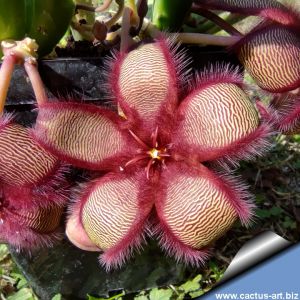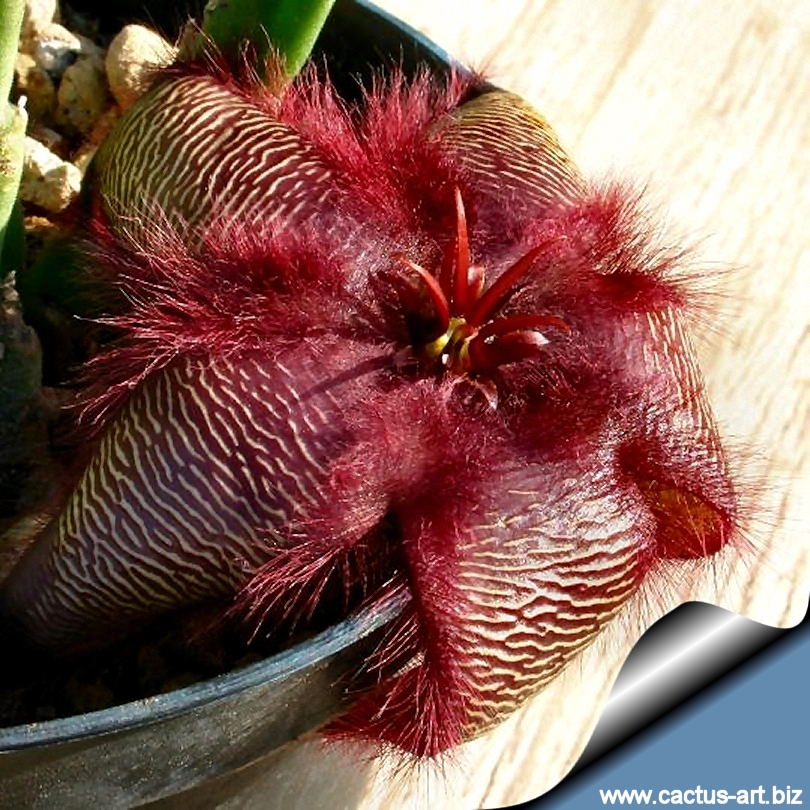-
x
Description
|
Produces big, dark-red flowers in autumn. They are, flat and densely covered by long hair at the centre that remember the fur of a dead animal. The moderate carrion smell of the flowers attracts flies. Family: Asclepiadaceae (Apocynaceae) (Milkweeds family) Type: Lectotype. Conserved at the The George Clifford Herbarium Habitat: From winter rainfall area. S. hirsuta was (along with S. variegata later transferred to the genus Orbea) the second stapeliads to be discovered. Linnaeus then described and set up the the new genus Stapelia in 1737 and based the genus on S. hirsuta that now stands for the type species of the genus. Vernacular name (s): Starfish flower, Carrion Plant Etymology: The genus epithet "Stapelia" was named in honour of Johannes van Stapel, who published drawings and descriptions of the first Stapeliae discovered (Orbea variegata)The species name derives from the Latin adjective “hirsutus” meaning "rough, shaggy, bristly” (The specific name implies: “hairy” )
|
|
|
Habit: Groundcover, clump forming. |
|
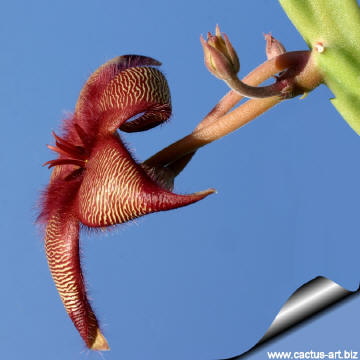 |
 |
| . | |
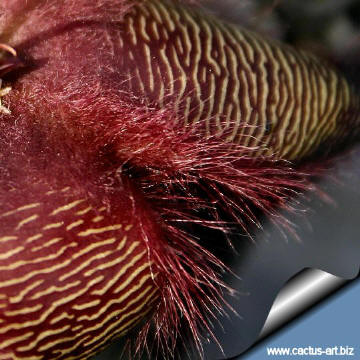 |
 |
| . | |
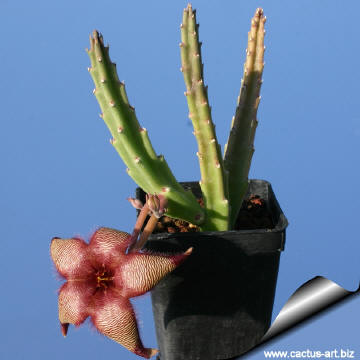 |
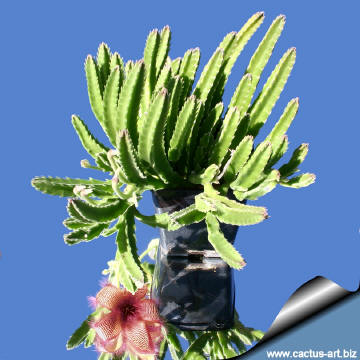 |
|
The flowers are densely shaggy (hirsute) at the centre. Purplish colour simulate the rotting flesh of dead animals. These flowers attract beetles and carrion flies who pollinate the plant as they are fooled into trying to lay eggs on the flower. Cultivation: Together with Stapelia gigantea and Orbea variegata, probably the most widely cultivated of stapeliads. It is an easy obliging blooming plant when mature, they are happy in any average succulent house. |
|

